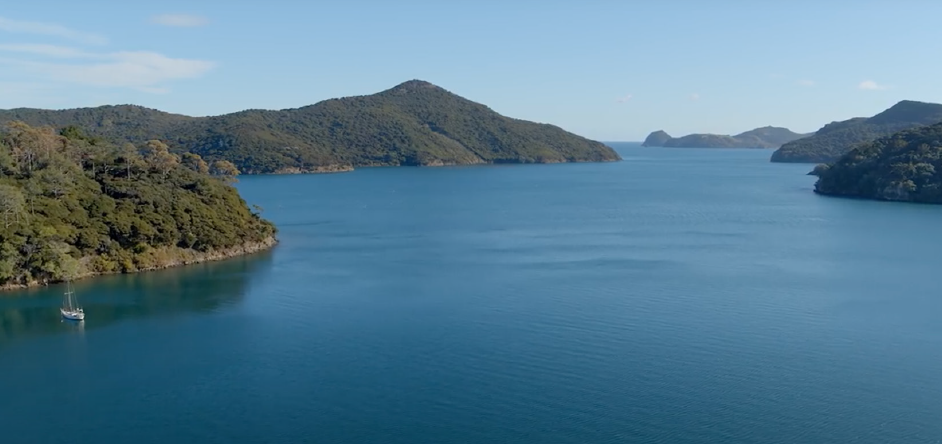Exploring tourism taxation as a method to fund a regenerative future
By Melissa Baird, Communication and Brand Consultant, The GDS-Movement
When COVID-19 turned the world of tourism upside-down, tax relief or cancellation was introduced with the intention of assisting the industry. As the discussions began on how to ‘build back better,’ a key question remains on how a regenerative future can be funded. Could well-designed tourism taxes be part of the answer?
This is the starting point of a newly published White Paper, Tourism Taxes by Design, which explores how tourism taxation can be designed to support recovery and the long-term development of a more resilient and regenerative tourism economy.
The white paper explores the different kinds of tourism-related taxes, the existing models and revenue flows already in place and their impact, including further research into the current funding situation of destination organisations (DMOs) in Europe. Twenty-one out of thirty European countries have implemented tax, levies and duties on travel and tourism services that offer multiple examples and models where tourism tax revenue is used to invest in sustainable tourism development.
As we prepare for recovery, what can we learn from those destinations who are leveraging tourism taxes as a model to create a more sustainable, resilient future?
What role can tourism taxes play in supporting a destination?
Whilst researching for the white paper, we grouped the tourism tax models used under one of seven different headings, sorted from the most commonly seen models through to the gold star standards of regenerative tourism taxation:
Generic tourism tax models… | … And the roles that they can play |
| Revenue generation | Revenues from tourism taxes goes into the general government budget |
| Regulate flows and behaviour | Encouraging certain behaviours, such as having differentiated rates according to seasonality, city zones, types of establishment, etc. |
| Relief in times of crisis | Many states have suspended taxes or lowered VAT during the COVID-19 crisis to support spending in key areas |
| Reload | It is common for many destinations to allocate tourism tax revenues to promote the destination, marketing, and branding |
| Rethink | Some destinations allocate tourism tax revenue to tourism innovation and research |
| Regeneration | Advanced European destinations such as Barcelona and the Balearic Islands use revenues to regenerate the destination’s natural and cultural resources |
| Taxing for resilience | This is mostly a theoretical objective, but it has high potential as a means of facing the next big crisis with a buildup of funds for insurance purposes and cancellation guarantees for event owners. |
Exploring the different taxation designs and models, it is clear that there is no one size fits all solution, although most of the tourism-related taxes have an element of regulatory design. While tourism taxation has generally been perceived as the ‘elephant in the room,’ the white paper research shows that the perceived negative impacts on demand and competitiveness are rather marginal. Furthermore, consumers are inclined to be more willing to pay taxes if there is transparent reinvestment of the tax revenue for ear-marked “good purposes” (sustainability, local community, cultural and natural preservation).
Best practice examples of tourism tax models from around the world
Barcelona: Addressing the cost of tourism
Barcelona is a world leader in tourism policy design and regulation. Since 2012, the city has received €72.7M in tax revenues which have been used on destination management, promotion and development. The city government seems conscious that tourism is not just a benefit, but also in some respects a burden for the destination.
 According to an upcoming study commissioned by the City Council evaluating the impact of tourism on the municipal budget, the very early estimate is that the income from the tourism taxes currently only covers between 13 and 29% of the tourism related expenditure. Still, the revenues from tourism taxes are intended to subsidise projects aimed at developing and protecting the environment, stimulating sustainable tourism, restoring and protecting historical heritage, financing scientific research, and sustaining coexistence and development of neighbourhoods, cultural and creative activities, and tourism innovation.
According to an upcoming study commissioned by the City Council evaluating the impact of tourism on the municipal budget, the very early estimate is that the income from the tourism taxes currently only covers between 13 and 29% of the tourism related expenditure. Still, the revenues from tourism taxes are intended to subsidise projects aimed at developing and protecting the environment, stimulating sustainable tourism, restoring and protecting historical heritage, financing scientific research, and sustaining coexistence and development of neighbourhoods, cultural and creative activities, and tourism innovation.
Since the creation of the tax, tourist activity in Barcelona has continued its steady growth curve from 7,1 million guests in the hotels in 2013 to 9,5 million in 2019 according to Statista. Early estimates of Barcelona study indicate that tourism tax revenue covers between 13% and 29% of tourism related expenditure.
Austin, Texas: Funding development and resilience
In 2019 in Austin, Texas, the City Council approved a “live music fund” from the city’s hotel occupancy tax. Fifteen percent of the occupancy tax revenue will be directed to the local commercial music community, while another 15% is to be directed to historic preservation. The remaining 70% is to be directed to the Austin Convention Center.
New Zealand: Tourism taxes to ensure sustainable tourism growth:
 From July 2019, New Zealand introduced an arrival tax of NZD 35 for most foreign visitors (with a few exceptions.) The tourism tax is called the “International Visitor Conservation and Tourism Levy” and the tax revenue is to be invested in sustainable tourism and conservation projects.
From July 2019, New Zealand introduced an arrival tax of NZD 35 for most foreign visitors (with a few exceptions.) The tourism tax is called the “International Visitor Conservation and Tourism Levy” and the tax revenue is to be invested in sustainable tourism and conservation projects.
On the website, it is clearly stated that tourism tax serves the purpose of making “sure” that New Zealanders' lives are enriched by sustainable tourism growth. It will do this by “investing in projects that will substantively change the tourism system, helping to create productive, sustainable and inclusive tourism growth that protects and supports our environment.” The funds are guided by an advisory group that meets three times a year with expertise and experience across the industry, in tourism investment, in conservation, and in environmental matters.
Slovenia: For industry and destination resilience
In January 2019, Slovenia added an additional “promotion tax” to the existing tourist tax. The amount of the promotion tax is 25% of the tourist tax and is intended for planning and implementation of marketing and promotion of Slovenia. The revenue of the tax goes to the Slovenian Tourist Board.
Levering tourism taxes for place regeneration
Though not as prevalent there are quite a few examples of tourism tax models designed to fund destination development or for broader environmental and community purposes. This taxation’s purpose is regenerative because it is a mechanism to ensure that destinations can generate shared value from tourism and give back to the local communities.
According to OECD, there has been significant increase in the number of taxes with an environmental focus, designed to encourage environmentally positive behaviour change from operators and tourists, or to provide funding to better manage the environmental or otherwise negative impacts of tourism activities.
In regenerative tax models, revenue can be used for infrastructure, community projects, restoration or investment in local culture, nature preservation, education or social projects.
Iceland: Taxes for protection of nature
 In Iceland, The Tourist Site Protection Fund was established in 2011 (Act No. 75/2011) to promote the development, maintenance and protection of nature-based tourist attractions under public ownership or supervision. The Tourist Site Protection Fund is financed by an Accommodation tax (Act No. 87/2011) and additional government funding. It is governed by a board of representatives appointed by the Minister of Industry, local industry and municipality associations. Capital from the Fund is used to ensure tourist safety, protect Icelandic nature, and is intended to diversify sites visited by tourists to reduce pressure on the most frequently visited destinations.
In Iceland, The Tourist Site Protection Fund was established in 2011 (Act No. 75/2011) to promote the development, maintenance and protection of nature-based tourist attractions under public ownership or supervision. The Tourist Site Protection Fund is financed by an Accommodation tax (Act No. 87/2011) and additional government funding. It is governed by a board of representatives appointed by the Minister of Industry, local industry and municipality associations. Capital from the Fund is used to ensure tourist safety, protect Icelandic nature, and is intended to diversify sites visited by tourists to reduce pressure on the most frequently visited destinations.
In recent years, there has been political debate in Iceland over introduction of new taxes to curb the exponential growth in visitor numbers to the country.
Seven design criteria for tourism tax
What, then, are the most essential criteria to consider when creating a tourism tax model for your destination?
1. Earmark and ring-fence: Whether for general tourism promotion or for regenerative purposes, there is a consensus among leading associations, intergovernmental organisations and amongst local stakeholders that tourism tax is a specialised tax and its revenues should be allocated and invested as such.
2. Local governance adds collaborative capability: Local governance and representation is often key to balancing stakeholder interests and to earn political support for the tax regime and support of the local DMO. Local and democratic governance and distribution of funds adds to the legitimacy of the tax and collaborative capability of the destination.
3. High visibility and transparency works with consumers: Case studies prove that tourism taxes are often well received with consumers if communicated as a modest contribution to be used for purposeful, regenerative projects and activities.
4. Public engagement and consultation are key: Governments or destinations looking to introduce or change tourism taxation policies need to engage in open and public conversation.
5. Specify how to comply: In their comprehensive 2017 study, PricewaterhouseCoopers (PwC) highlights the importance of ensuring compliance with the tax regime. This can be done by offering advice and extensive instructions to less resourceful SMEs and by committing industry associations and platforms. In some member states, tax authorities have committed the large shared platform providers (such as Airbnb and HomeAway) to facilitate the automated collection of occupancy taxes.
6. Monitor and evaluate impact: There is a lack of good data as well as monitoring, evaluation, and analysis of the impact of tourism-related taxes and incentives to ensure they are meeting their stated objectives without adversely affecting tourism competitiveness.
7. Consider both benefits and burdens: For many good reasons, much literature, research, and political advocacy have long focused on the economic and social benefits of tourism in a global world. However, it is vital to also understand and address the “invisible burdens” of the visitor economy to the destination that present themselves in many forms.
Both the research and case studies prove that well-designed tourism taxes can be both practical and meaningful tools in the sustainable management of the destination’s resources. Ultimately, regenerative tax can offer a vital lifeline to recovery.
The research was developed by Group NAO and the Global Destination Sustainability Movement and has been launched in partnership with European Tourism Association (ETOA) with support from nine urban tourism destinations. Read the full white paper here: TOURISM TAXES BY DESIGN
Group NAO works with transformative agendas, ideas and strategies in travel, tourism, culture, and urban development. We are strategic creatives, change communicators and imaginative analysts.
The GDS-Movement’s mission is to enable destination management professionals to catalyse and co-create sustainable and circular strategies, that will enable destinations of the future to thrive, and society and nature to regenerate.
Watch the webinar launch HERE.
Related reading:
The roadmap for sustainable recovery
Five ideas everyone should take away from the City Nation Place World Congress
Tāmaki Makaurau Auckland is calling
Six tips to be more cost-effective as a place brand and marketing organisation
14 steps to nation branding: a practical guide
Three key concepts as we rethink, retool, and reinvent
COVID-19 - the sequel: communication implications for destination marketing









